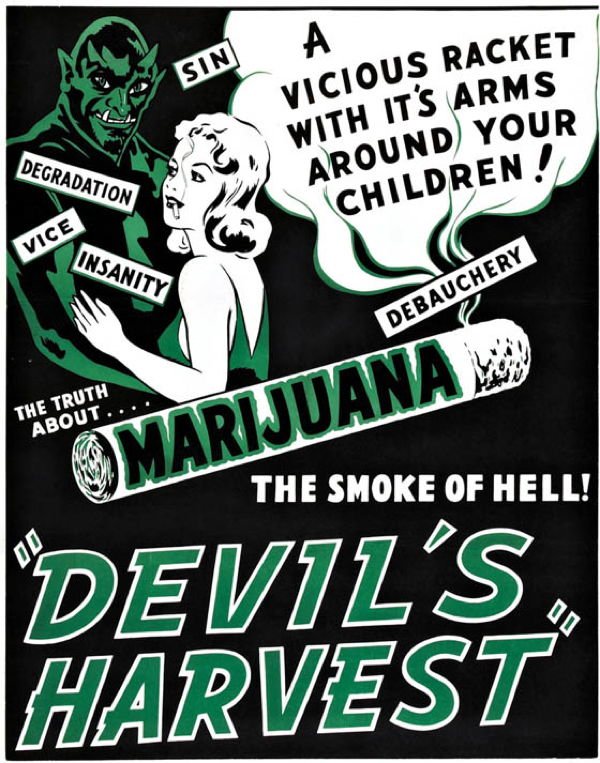
[A ridiculous anti-marijuana poster; 1930s propaganda.]
SIGNS OF THE TIMES
THE FAULTY WAR ON DRUGS
The supposed "war" on drugs has been an absolute joke from its inception, in terms of public health, economics and overall logic. Not only has the alleged war not solved any problems in areas of hard drug abuse or illegal distribution, but it has furthered the discourse between cities, countries and individuals by neglecting to impose any real legislation on the matter. The goal that is promoted by the failed, uphill battle against drugs is that it is supposed to save people from drug use, to somehow better society and rid the world of one form of evil. To say the least, the war on drugs has not just failed but is actually killing millions of people with its narrow-minded, obstructive logic. The war on drugs is being sold as another distraction so that the general public will turn a blind eye to the real problems - the environment, the government, and the economy - but it is not saving any lives, nor is it removing the presence of drugs from human life.
The above video gives an overview of the wastefulness and misfires of the War on Drugs.
THE BEGINNINGS OF DRUG CRIMINALIZATION IN
AMERICA

[A ridiculous anti-marijuana poster; 1930s propaganda.]
In the early 1930s, the government focused its attention on convincing the public of the "dangers" of certain drugs as opposed to legalizing and regulating them, and treating addictions as health issues. Under President Hoover in 1930, the Federal Bureau of Narcotics was created. Its first commissioner was politician Harry J. Anslinger, and under his reign, the FBN became notorious by lobbying for extreme penalties for drug use (Wikipedia). The organization is best-known for criminalizing marijuana with the Marihuana Tax Act of 1937, as well as for its relentless efforts to crack down on the use of opium and heroin. While, at the time, much of the world was educated about the benefits of marijuana plants including hemp, fibers, and medicinal properties, its legacy was rewritten in America to be a completely fabricated slew of warnings and horror stories that would criminalize the drug for years to come, and deter people from knowing the truth about it. The Marijuana Tax Act of 1937 prohibited cannabis use, production, and sales, including production for hemp (NORML). The FBN was responsible for organizing a collection of purposefully false information about how the use of marijuana was directly linked to criminal activity, and was a cause of violent behavior and even insanity (Drug Library). Without actual scientific evidence or any other valid source of proof or support for their anti-drug propaganda, the agency continued for years to recycle its message using only the lies that it was built upon - as opposed to actual research - to continue fueling the budding war on drugs.
THE BRAINLESS BATTLE TO BAN HEMP
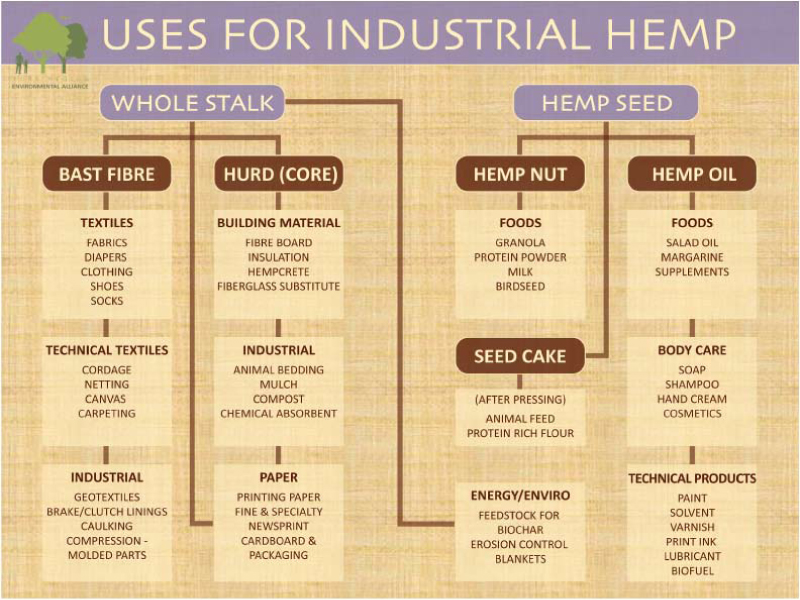
[Benefits of industrial hemp via York Region Environmental Alliance]
Hemp has a long history of industrial use, and came under fire by American government associations as a result of bogus association with recreational/medicinal marijuana, which they worked hard to advertise as a highly dangerous drug. In the early 1600s, hemp was pushed by Virginia lawmakers as a necessary crop for farmers to grow (Wikipedia). Even George Washington supported the growth of hemp for industrial purposes, and he also grew the plant himself. In 1619, farmers of the Jamestown colony were required to grow hemp. Following the enactment of the Marihuana Tax Act of 1937, the production of hemp was still urged as a part of the "Hemp for Victory" campaign, an effort of the American government to encourage hemp production to sustain military needs during World War II such as uniforms and textiles (CNN). The environmental, health, and financial benefits of the hemp plant are undeniable, and it is likely the Founding Fathers would be utterly shocked at the prohibition efforts that have been raging on since the 30s. The war on hemp specifically is shameful, given the sustainability of the plant, and its multitude of benefits that today's dwindling environment could benefit from. Researchers have concluded that hemp contains properties that make it a go-to source to produce biodiesel, a sustainable fuel made using renewable plant sources (University of Connecticut).
The whole governmental attack on marijuana not just as a recreational drug, but on hemp as a valuable plant product was built from complete fraudulence. In the United States, industrial hemp was grown for years to support a number of different industries. Hemp production was a lucrative business until it became directly linked to recreational marijuana, which lawmakers marketed to American citizens as "The Devil's Weed" in attempt to dissuade public use. Up until the 1890s, production of hemp was encouraged for the purpose of making rope, sails, clothing and other materials. It was once legal in Virginia, Maryland and Pennsylvania to exchange hemp as legal tender. During the messy anti-marijuana campaign that roared through the 1930s, however, hemp eventually became associated with the "evil" drug marijuana (whose flowers and leaves are a derivative of hemp plants), and therefore moved on to become banned entirely. While it was known that no dangerous effects were produced from the recreational use of marijuana, federal agencies continued to circulate false, negative information from weak studies, and the drug quickly became associated with the main targets of the government, opium and cocaine.
Aside from using the imaginary evils of marijuana as a cover-up for a campaign of racism, the government also corrupted public perception on hemp based on greedy motivation, not for concern of public health. Anslinger for example, in his raging "war" against drugs, was certainly motivated by financial gain in his crusade to ban the production and use of hemp. He was the nephew of the Treasury Secretary Andrew Mellon, who happened to be one of the wealthiest investors in the country during the 30s. Mellon, who resigned from his position after the threat of impeachment in 1932, was an investor in DuPont Chemical, a company that was developing a variety of chemicals and gasoline additives that would be threatened by the production of hemp-based materials (Death and Taxes). For Anslinger, there was also the consideration of receiving financial backing from William Hearst, a publisher whose timber and forest products likely would have been affected by the widespread production of hemp (Alternet). Though many highly debate that Anslinger had any financial motivation in his push to criminalize marijuana, it is not such a far-fetched notion.
ULTERIOR MOTIVES AND FUEL FOR THE WAR ON DRUGS
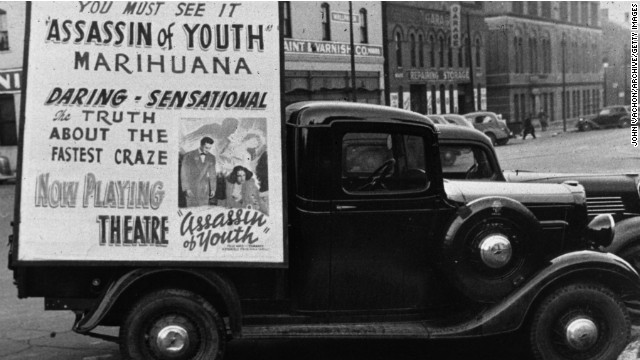
[A truck promoting a marijuana prohibition film, 1930s.]
Anti-marijuana campaigns seized the moment in the
1930s by using the unemployment associated with the Great Depression to promote
a link between Mexican immigrants and the "problem" of marijuana, fueling the
public resentment of both cannabis and minority populations (PBS).
From that point on, the propaganda and miseducation snowballed into a national
pandemonium about the drug. In the south, marijuana use became associated with
the minorities who smoked it including Mexican immigrants and blacks, which gave
white America another reason to give the drug a negative story. In the West,
recreational use was associated with racist attitudes towards Mexican
immigrants. The first marijuana-related arrests in California took place in
1914, in a Mexican neighborhood, when the Los Angeles Times reported that the
drug was surrounded by
"sinister legends of murder, suicide
and disaster" (Alternet).
The following year, in 1915, the Texan city
of El Paso outlawed marijuana use after a Mexican gangster who was "crazed" by
habitual use of the drug killed a cop. After prohibition was repealed in 1933,
the majority of states had developed their own laws banning cannabis. The
propaganda circulated about hemp and marijuana spun widely out of control, and
is still guilty for obstructing the legalization of such materials today. A
Washington Times editorial published before Congress' hearing on the hemp
issue made the statement that the "fatal marihuana cigarette must be recognized
as a deadly drug, and American children must be PROTECTED AGAINST IT. (NORML)"
Former President Franklin D. Roosevelt furthered America's deceptive take on drugs with his support of Anslinger's agenda with the Federal Bureau of Narcotics. In 1935, Anslinger received Roosevelt's support in establishing the Uniform State Narcotics Act, which contained state laws that were to regulate cannabis and its users. During the same year, Roosevelt delivered a statement over the radio pertaining to the new laws. The New York Times published the article of his radio transcript with the title "Roosevelt Asks Narcotic War Aid" (Drug Library). In his speech, he states that with the Uniform State Narcotics Act, states would be able to play a part in giving citizens of each respective state "far better protection than they now have against the ravages of the narcotic drug evil". The same president who was obviously so concerned for national health and drug abuse contradicted himself big time when, in 1933, he signed into law the Cullen-Harrison Act, a piece of legislation that legalized beer and wine with a certain alcohol content (Prohibition in the United States). Roosevelt is not alone in his fluke; a large majority of politicians and Americans in general still find it difficult to consider alcohol a drug, although its death toll far surpasses that of marijuana, a drug that legitimately has no death toll.
CONTINUED ANTI-DRUG PROPAGANDA FROM U.S. LEADERS

What we know today as the American war on drugs was further pushed onto society by former President Nixon. He declared war on drugs in 1971, and from that point on the battle has only become messier, greedier and deadlier. Two years prior to his official declaration of the new war, Nixon delivered a message to Congress stating that drug abuse is a "serious national threat." In 1973, he introduced the Drug Enforcement Administration, or DEA to monitor the anti-drug efforts of all other agencies (NPR). His radical policies and the decision to render drugs as public enemy number one were a direct response to the drug-laced era or the 1960s. The use of drugs during those years was read by many Americans, specifically the Nixon administration, as a sign of rebellion and social destruction (Drug Policy Alliance). His answer was to increase drug enforcement, and take a strict approach to drug users with mandatory sentencing and no-knock warrants. In these formative years, the war on drugs was sold to the American people as an effort to save them, an effort to improve the country and make the world a safer place. The harsh reality is that the war on drugs is nothing but a euphemism for the ongoing war on freedom of choice, and a means for government agencies to fuel class and race wars, and generate funding instead of formulating logical, helpful legislation on drugs, distribution and use.
Nixon was responsible for signing into law the Controlled Substances Act in 1970, which he and other administration members promoted as a measure for public health. Instead, the law was a means of giving free-range to police, lawyers, and the judiciary branch to harshly punish drug users of all kinds. Under the Controlled Substances Act, law enforcement is given the green light to "combat drug crime," and they were also given the deadly power to determine (and change at any time) the status of each drug and what category each belongs to (News Lanc). Drugs and substances are divided into a group of varying schedules, dependant on the potency, abuse rate and effect of the drug. Under Nixon's act, marijuana was moved to become a Schedule I drug, placing it into the same category as drugs that are actually life-threatening such as ecstasy and heroin. Nixon's anti-drug brainchild, the DEA, still continues to regulate all drugs, including pharmaceutical ones. This gives doctors and other healthcare professionals the deadly power of prescribing drugs that people don't need, that could possibly make their health even worse, or that could potentially lead to a life-threatening addiction. Through the Controlled Substances Act, doctors have the right to prescribe, in terms of pills, death to their own patients (Medical Executive Post).
THREAT OF THE U.S. PHARMACEUTICAL INDUSTRY

The above photo is, sadly, not an exaggeration. Many times, during the over-acted and seemingly pleasant commercials that we hear and see for medications meant to reverse or prevent numerous health issues, it is common to see images of smiling people on screen going through some happy, great life transformation thanks to whatever poison it is their doctor prescribed them, while simultaneously there is a voice speaking over in the commercial: "Side effects may include nausea, headache, shortness of breath, heart attack, high blood pressure, stroke, and even death. This product may worsen your symptoms, in this event, contact your medical professional for options." The American pharmaceutical industry is famous for spending ridiculous amounts of money developing and marketing drugs that are even more unsafe than the ones that the DEA tries so hard to keep off the streets. According to a study in 2008, the pharmaceutical industry in the U.S. spent more on marketing than it did on actual research of what they would be selling to citizens (Science Daily). The industry is not based on saving lives or improving human health, it is concerned about what the rest of corporate America is concerned about: making more money.
Aside from lobbying and massive, deadly advertising campaigns, it seems that the industry just doesn't run out of money when it comes to producing new drugs and keeping people sick enough to buy them. In 2013, it was reported that the cost to formulate a new drug is roughly $5 billion (Forbes). On top of that, it costs a company hopeful of branding a new type of medicine at least $350 million before the medicine is even ready for public sale. You would think that after the process of releasing more and more synthetic toxic drugs that "Big Pharma," as the industry is lovingly termed, would reconsider its approach, and that maybe our government needs to redirect their attention from the failing war on drugs and instead regulate chemicals and what they're carelessly prescribing to sick Americans.
Currently, pharmaceutical drugs are the fourth leading cause of death in the United States (Collective Evolution). While the drug agencies of the government seemingly monitor every minute little detail of the illegal drugs, they have a hard time paying common sense to the activity between doctors legally prescribing lethal amounts and types of drugs to unknowing individuals. Prescription drug abuse is a problem constantly on the rise, due to its ease of access and the frequency and ease of prescribing dangerous drugs. The main prescription drugs that lead to addiction and in many cases, death, are painkillers. Reportedly one in five Americans admit to misusing a prescription drug at some point (Web MD).
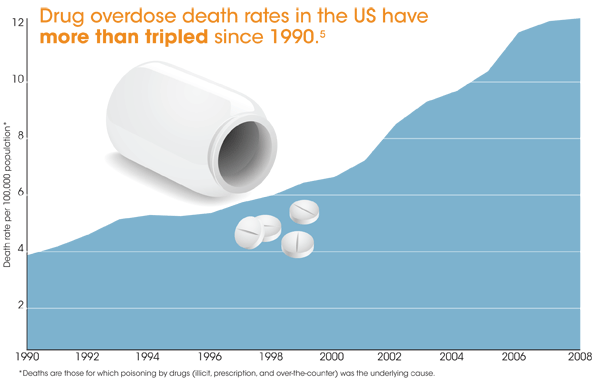
Overly prescribed painkillers such as Vicodin not only become a threat to adults, but to children as well, since doctors have grown increasingly less restrictive in prescribing such medications. It is estimated that every day, 2,500 Americans between the ages of 12 and 17 abuse a prescription painkiller for the first time (Drug Free World). It becomes clear to youths and many other Americans that since these drugs are legal, they must be safe. The pharmaceutical industry has just as much blood on its hands, if not more, than the drug industry that takes place on the streets. The number of deaths caused by prescription painkillers alone was about 14,800 in 2008, more than deaths caused by heroin and cocaine (CDC).
HYPOCRISY OF ALCOHOL LEGALIZATION

In the infamous war on drugs, one major substance seems to consistently slip under the radar, rarely ever being called a drug: alcohol. It is estimated that the United States' habit of excessive drinking costs the country billions of dollars annually, $223.5 billion in 2006 (CDC). With so much action being taken towards criminalizing non-threatening drugs, wasting money on keeping the war on drugs going, attention is constantly diverted from helping those addicted to alcohol and monitoring its consumption in general. Alcoholism has been a rampant problem in our country since the beginning, so it is very hard to believe that such a drug has been legal for so long while other, less-dangerous drugs are sought out and criminally punished. The government has a long history of approaching the issue from the wrong angle, by attempting to dissuade adults from over-consumption as opposed to harshly regulating the sale and distribution of alcohol itself (Recovery First).
It is quite ironic that the same president who supported the war on drugs, Franklin D. Roosevelt, was the same president to legalize the sale of alcohol, as if it were any less dangerous than other substances. It's true that the prohibition of alcohol was not solving any problems, and that it actually lead to an increase of organized crime, violence and corruption on both citizen and government levels (CATO). However, it makes no sense to legalize and monitor one drug and not all of them. During the years of prohibition, it was obvious that people were still finding ways to drink, and dangerous ones at that. There is a definite parallel between the prohibition of alcohol back then (prior to the 1930s) and the current prohibition of marijuana and other drugs.
Drinking alcohol is seen as more acceptable than taking any other drug, for the simple fact that it is legal to buy, sell and consume it. But the problems that come along with alcohol are immeasurable and a destructive force in individuals, families and society. The Centers for Disease Control and Prevention state that 51.3% of American adults are considered to be current, regular drinkers. Alcohol addiction has long been a problem for this country and for most of the world, but in America specifically, it is speculated that 18 million adult citizens are alcoholics or have problems with alcohol (National Institute of Health). Looking at data from 2010, alcohol notably lead to more deaths than all illegal drugs combined. That year, there were 25,692 alcohol-induced deaths compared to 17,000 deaths resulting from illegal substances (Drug War Facts).
OPPOSITION TO TRADITIONAL, SPIRITUAL DRUGS
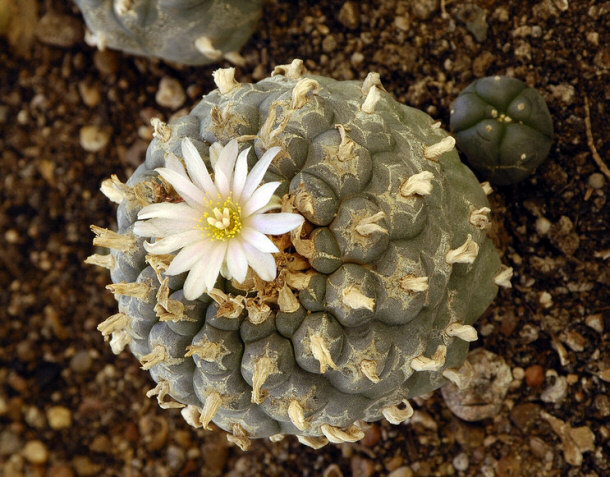
The war on drugs is not just a failed effort to improve public health, but it is a deliberate attack on human consciousness and awareness. Anything that may possibly lead people to question beyond what they are told by the controlled media is seen as a threat, so it is no wonder why natural drugs have been targeted and criminalized by ill-educated governments. Native American tribes, and various native peoples from different regions of the world have been using natural drugs and substances mainly from plants for centuries, if not longer. Ritual drugs used for development, cleansing and enlightenment such as peyote and ayahuasca have come under great scrutiny from lawmakers, who of course, have tried everything in their power to prohibit the use of such drugs even in religious ceremonies.
Ayahuasca is a brewed blend of various plant infusions, and produces psychedelic effects when ingested (Wikipedia). The term ayahuasca translates to mean "vine of the souls" or "vine of the dead," perhaps since it often allows users the ability to contact with ancestors. Most, but not all varieties of the ayahuasca brew contain DMT, a powerful hallucinogen that is frequently called the "spirit molecule" due to its ability to expose users to ethereal awareness and, in many cases, it produces the same feelings one would endure during a near-death experience. Many other plants and herbs can be added to the traditional blend of yagé and chacruna plants in order to alter, heghten, or diminish certain effects or for therapeutic uses (BioPark). It has been consumed traditionally in various parts of the world, including Ecuador, Peru and Colombia. It has been reported that individuals who ingest the brew experience a purging of some sort, usually through vomiting, but this is seen as part of the spiritual experience as a whole, as a way of ridding the body and mind of negativity.
The brew is said to allow users to experience profound spiritual visions, including communication with spirit guides or simply experiencing dimensions and planes far outside our own "reality." Traditionally, ayahuasca has been used for divination or seeing into the future, as well as for spiritual and physical healing and even artistic inspiration (Cultural Survival). It is highly significant in the practice of communicating with dwellers of the spirit world. Though it is thought to be rarely ingested outside of ritual practice or for some other religious reason, it is advised by experienced tribes, shamans and other practitioners of natural medicine that any individual seeking an ayahuasca experience should not ingest the brew unless supervised by a well-trained shaman, for the safety of the user. Since ayahuasca users widely report an ability to transcend beyond the confines of reality and have their minds open to personal development and higher understanding, it is no wonder why the brew is under such close watch by government agencies and the like. The war on drugs, as stated before, is a war on free thought, a battle for control of the citizens.
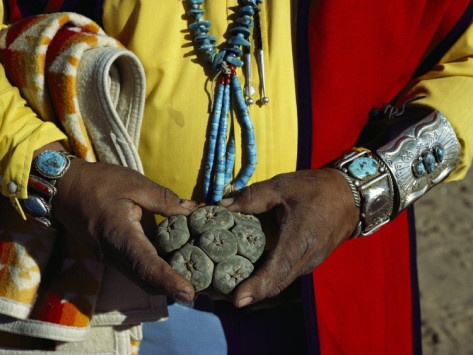
[Shaman holding a variety of the peyote cactus.]
While ayahuasca itself is not currently illegal in the United States, the lines are very blurred. It is legal to possess the plants necessary to produce the brew, but if any plant containing DMT is added to the mixture, then it becomes illegal. There are also some legal exceptions that apply to ayahuasca in the U.S. It is recognized as the official sacrament of two different religions, the Santo Daime Church and the Uñiao do Vegetal (UDV), both of which have members living in the United States as well as South America (Entheology). These exceptions are positive, but they still do not ease the scrutiny that religious and spiritual drugs attract so often. Peyote, a drug widely used in many Native American ceremonies and derived from a breed of cactus, had its time in the Supreme Court just as ayahuasca did. The psychedelic cactus has been in use in Native American religions for at least 5,500 years, and is known to enhance experiences of meditation, psychotherapy and transcendence (Wikipedia). U.S. government organizations tried desperately to outlaw the drug as a ritual tool, but the Native American Church is cleared to continue using the drug as a religious supplement.
ORGANIZATIONS SUPPORTING THE CRIMINAL WAR ON DRUGS

It has been over 40 years since this war began, and there will always be opponents to progress that could ultimately save people's lives. The following organizations are responsible for obstructing America's pathway to drug policy reform and logical legislation.
CALM:
Citizens Against Legalizing Marijuana
A California-based group, CALM works to reverse the legislation that keeps
medical marijuana use legal in the state of California.
DEA: Drug Enforcement
Association
Since the organization came into existence, it has relentlessly criminalized
and persecuted all drugs with insane amounts of aggression and force, without
much scientific reasoning - just the same, recycled propaganda from the 1930s.
They justify their position in stopping marijuana legalization with the
explanation that it is "reckless and irresponsible" (RT).
They obviously do not consider the event of American prohibition leading to
violent cartel wars and drug issues abroad as "reckless."
Marijuana Harms Families
An extension of the Save California organization, this group promotes
marijuana as a highly-potent, "mind-altering" drug that is responsible for
damaging families and ruining the lives of children.
Partnership
for Drug-Free Kids
An anti-drug organization existing since 1987, this group has been on a
continuous campaign to keep up the "just say no" vibe as opposed to working for
positive legislation and informative education on drugs.
ORGANIZATIONS & PEOPLE ON THE RIGHT TRACK TO REFORM
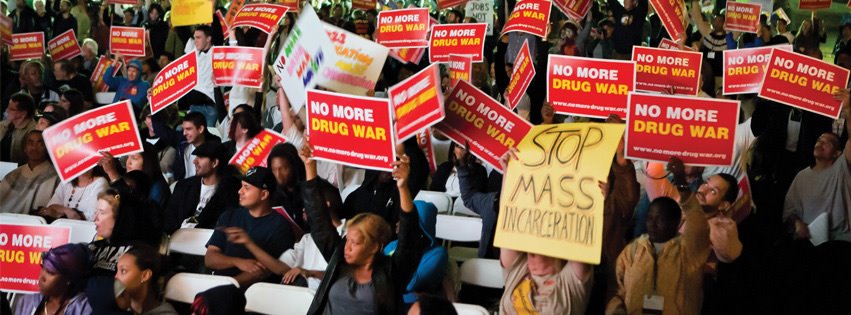
There has been a surge of organizations emerging nationwide who are on the positive road to real drug legislation. While these groups are a huge step forward in the effort to correct the global mess of the drug war, they are in need of social and political support in order to be successful.
ASA:
Americans for Safe Access
This organization is working to ensure safe and legal
access to marijuana both for medical purposes and for research. ASA continues on
the right path towards proper legislation by providing educational resources,
fighting for patient rights, and working at the grassroots level to reverse the
stigma associated with medicinal use and cannabis research.
CSDP: Common Sense
for Drug Policy
A non-profit organization dedicated to exposing the truth about the
distorted drug war, reforming current policy and reducing harm associated with
the drug industry. The CSDP supports the needle-exchange program, as well as
other measures that would decrease the spreading of HIV/AIDS through drug use.
DPA:
Drug Policy Alliance
The DPA is the nation's top organization promoting the transition to drug
policies that are based on science, health, and human rights. They work to
promote logical drug policy, to erase the detrimental effects of incarceration
for drug charges, and to prevent any more harmful legislation from coming into
law.
Drug
Sense: Drug Policy Central/Media Awareness Project (MAP)
Drug Sense has been involved in the fight for drug policy reform since 1995.
Their Media Awareness Project is a great effort that encourages unbiased,
truthful media coverage, online activism, and serves as a research tool for drug
policy.
HRC:
Harm Reduction Coalition
The HRC was founded in 1993 by a group of needle exchange providers, users,
and advocates. The goal of the organization is to break stigma surrounding drug
users as well as to further push for reform of failed drug laws.
George P. Shultz:
Former Secretary of State
Shultz served under both the Reagan and Nixon administrations, and states
that he was immediately concerned about the war on drugs as soon as he took his
first cabinet position in 1969 as Reagan's secretary of labor. He realized the
ineffectiveness of the government's efforts in terms of keeping drugs out of
America, which Shultz acknowledged is an impossible task. He served as the
nations 60th secretary of state from 1982 to 1989, and made it evident that he
saw through the facade of the turbulent drug war. While his opinions did gain a
lot of support, he received a number of opposing responses making it clear that
the American public was still highly uneducated about factual drug statistics
and the real reasons for the war on drugs.
LEAP: Law
Enforcement Against Prohibition
A non-profit organization composed of law officials who believe in reform
for the current, failing system of combating drugs. The organization believes
that the current laws must be repealed and replaced with a more logical system
of legalized regulation of drugs and substances, which would hopefully decrease
the amount of street violence.
MPP:
Marijuana Policy Project
The MPP was founded in 1995, and since then has been on the continuous road
to reform laws dealing with marijuana. MPP is working to remove criminal
penalties involved with marijuana use, and make the drug available not just to
the general public, but specifically to patients who are ill and could benefit
from the plant's natural pharmaceutical qualities.
NORML:
National Organization for the Reform of Marijuana Laws
The goal of NORML is to reverse the current set of criminalizing, defunct
laws about marijuana, educate the public about the plant, and push for the
legalization of responsible use as well as make sure that users have access to
safe, convenient and affordable marijuana.
Stop
The Drug War
An organization dedicated to ending drug prohibition worldwide,
StopTheDrugWar.org is on the path to remove the criminal aspect from drug use,
and work towards healthy reform. Their site is one of the highest-ranked sources
for articles and information on the topic of the drug war, and they also work at
the grassroots level for improved legislation and drug policy.
INFORMATION AND BACKGROUND
War on Drugs (Wikipedia)
30 Years of America's Drug War
A Brief History of the Drug War
MOST RECENT ARTICLES & UPDATES
The War on Drugs Destroys Lives - - Here Are 6 Things You Can Do About It (Yes Magazine, 5-16-14)
5 Reasons the War On Drugs is a Costly Economic Disaster (San Diego Free Press, 5-15-14)
Better Methods Needed for the War on Drugs (The Courier, 5-14-14)
Drug Warriors Invoke Their Service to Demand More Drug War (Washington Post, 5-12-14)
How Vested Interests May Trump Efforts to End the War on Drugs (The Blaze, 5-9-14)
Just Another Day in the Drug War (Washington Post, 5-2-14)
California Lawmakers Take a Stand Against Racist Drug War Policies (Huffington Post, 5-2-14)
Who Is the Real Enemy in the War on Drugs? (Huffington Post, 4-25-14)
The War on Drugs (Huffington Post, 4-16-14)
Letter: 'War on Drugs' Mentality Conflicts With Reality (CJ Online, 4-13-14)
The Fed Have Failed; Help the States Instead (New York Times, 2-14-14)
GENERAL ARTICLES
HISTORY & CURRENT FAILURE OF THE DRUG WAR
Losing the War on Drugs - - George P. Shultz (Hoover Institution, 8-15-13)
Have We Lost the War On Drugs? (Wall Street Journal, 1-1-13)
Gov. Chris Christie: War On Drugs is 'Failure' (NJ, 7-10-12)
The War on Drugs: How President Nixon Tied Addiction to Crime (The Atlantic, 3-26-12)
Nixon's 'War on Drugs' Began 40 Years Ago, and the Battle Is Still Raging (The Guardian, 7-23-11)
War on Drugs a 'Total Failure' and Statistics to Prove It (International Business Times, 6-17-11)
Reality Intrudes on the Drug War (Real Clear Politics, 2-15-09)
ON A GLOBAL SCALE
Report: Cheaper, Purer Illegal Substances Suggest Global War on Drugs Is Failing (CNN, 10-1-13)
'War On Drugs' Has Failed, Say Latin American Leaders (The Guardian, 7-12-12)
The Failed War On Drugs in Latin America: Could Decriminalization Be the Answer? (Spiegel, 2-10-10)
ACTION OF OBAMA ADMINISTRATION
Obamacare Fails to Address High Drug Prices (Mint Press News, 10-2-13)
On 40th Anniversary Of War On Drugs, Cops Decry Obama's Drug Policy (Huffington Post, 6-15-11)
LEGISLATION AND RESOLUTIONS
War On Drugs a Trillion Dollar Failure (CNN, 12-6-12)
Richard Posner, Federal Judge, Slams 'Absurd' Laws Against Marijuana, Other Drugs (Huffington Post, 9-11-12)
Should the US Legalize Hard Drugs? (Washington Post, 4-12-12)
NAACP Adopts Resolution to End the War on Drugs (Daily Caller, 7-26-11)
An Exit Strategy from America's Longest War - - 40 Years of Disastrous Drug Prohibition (Alternet, 5-14-11)
THE PHARMACEUTICAL INDUSTRY
Prescription Drugs Now Kill More People Than Illegal Drugs (Health Impact, 1-16-12)
Reinstating the Federal Ban on Syringe Exchange Funding is Murderous (Alternet, 12-16-11)
100,000 Americans Die Each Year from Prescription Drugs, While Pharma Companies Get Rich (Alternet, 6-24-10)
MISCELLANEOUS
Ayahuasca in the Supreme Court (Singing to the Plants, 1-6-08)